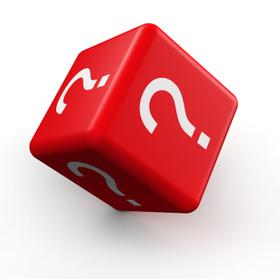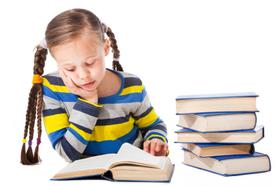Introducing Three Early Childhood Education Approaches
As parents of 1- and 2-year-olds, you embark on an exciting early childhood education journey. This guide will explore three popular and innovative approaches: Montessori, Reggio Emilia, and Waldorf. Each method offers a unique perspective on young children's learning and development, emphasizing child-centered, experiential learning. By understanding these approaches, you'll be better equipped to choose an educational path that aligns with your family's values and your child's needs. All three approaches offer advantages you probably won't find elsewhere. Indeed, you will find that other early childhood education approaches have adopted bits and pieces of these. But if you want the real thing, explore Montessori, Reggio Emilia, and Waldorf before committing.
Disclaimer: my eldest daughter attended a Waldorf school. All these years later, I remember how happy she was in an environment where she could explore to her heart's content. Music, math, language arts - all the subjects were interwoven in the most satisfying way for her young inquisitive mind.
So, whether you're considering preschool options or want to incorporate these philosophies into your home life, this guide will provide valuable insights into nurturing your toddler's growth and development.
Chapter 1: The Montessori Method
The Montessori approach, developed by Dr. Maria Montessori in the early 20th century, focuses on fostering independence, self-directed learning, and respect for a child's natural development.
Widespread Adoption
There are over 8,000 Montessori schools in the U.S., making it a widely available option for parents. Most belong to either the American Montessori Society or the Association Montessori Internationale.
Authenticity Matters
Not all schools calling themselves "Montessori" adhere strictly to Dr. Montessori's principles. . Authentic Montessori classrooms feature:
- Multiage groupings
- Uninterrupted work periods
- Specially designed learning materials
- Guided choice of activities
- Trained Montessori teachers
Individual Ownership and Operation
Each Montessori school is independently owned and operated, not part of a franchise. This can lead to variations in how the Montessori method is implemented.
Progressive Education Approach
Montessori schools are considered progressive, focusing on child-guided, teacher-facilitated learning rather than traditional teacher-directed instruction
Specialized Learning Materials
Montessori classrooms use specially designed materials to develop children's senses and facilitate learning. These include items like the pink tower, cylinder blocks, and colored beads for math.
For toddlers, Montessori emphasizes:
- Practical life skills
- Sensory exploration
- Language development
- Fine and gross motor skills
This video shows a Montessori classroom.
Chapter 2: The Reggio Emilia Approach
Reggio Emilia, originating in post-World War II Italy, views children as capable, creative learners and emphasizes the environment as a "third teacher."
Focus on Early Childhood
Reggio Emilia is specifically designed for early childhood education, focusing on toddlers and preschool-aged children.
Flexible Implementation
Unlike Montessori or Waldorf, there's no formal teacher training or certification for Reggio Emilia. Schools often describe themselves as "Reggio-inspired," adapting the philosophy to their specific contexts.
Post-War Origins
The approach was developed by educator Loris Malaguzzi in Reggio Emilia, Italy, as a response to the need to rebuild society after World War II.
International Movement
While it started in Italy, Reggio Emilia has spread worldwide, inspiring educators in over 34 countries.
Core Principles
Key aspects of Reggio Emilia include:
- Children as active participants in learning
- The environment as a "third teacher"
- Documentation of children's work and ideas
- Project-based learning
- The "hundred languages of children" (multiple forms of expression)
For toddlers, Reggio Emilia emphasizes:
- Sensory exploration
- Relationship-building
- Creative expression
- Open-ended play
This video shows a Reggio Emilia classroom.
Chapter 3: The Waldorf Approach
Waldorf education, based on the philosophy of Rudolf Steiner, focuses on developing the whole child—head, heart, and hands.
Global Presence
There are over 1,000 Waldorf schools worldwide, offering an alternative to traditional K-12 education.
Child-Centered, Teacher-Guided
Waldorf education is both child-centered and teacher-guided, focusing on integrating arts into every subject.
Independent Schools
Each Waldorf school is its own legal entity, individually owned and operated. The Association of Waldorf Schools of North America accredits them.
Progressive Education Model
Arts Integration
The arts are integrated across the curriculum in Waldorf schools, with students creating their own learning materials.
For toddlers, Waldorf emphasizes:
- Rhythmic, predictable daily routines
- Imaginative play
- Nature-based learning
- Artistic activities (painting, modeling, music)
This video shows a Waldorf classroom.
As parents of 1 and 2-year-olds, understanding these approaches can help you create a nurturing learning environment at home and make informed decisions about future educational paths. Each method offers unique benefits for toddlers, focusing on hands-on exploration, creativity, and respect for the child's natural development. Whether you choose to follow one approach or blend elements from each, the key is to support your child's innate curiosity and love of learning.
Questions? Contact us on Facebook and Instagram. @privateschoolreview
#EarlyChildhoodEducation #MontessoriMethod #ReggioEmilia #WaldorfEducation #ToddlerLearning #ProgressiveEducationForward





















